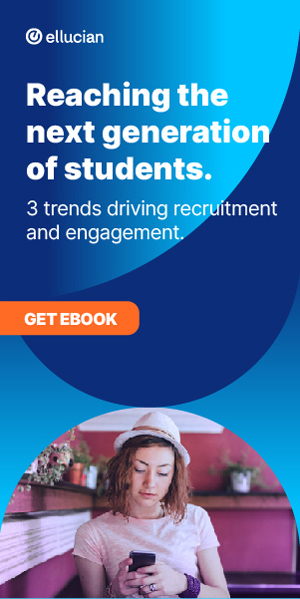
Many higher education institutions are hampered by significant technical debt. Before they can start innovating, they need to have an effective operating model in place
As universities recover from the immediate ramifications of the pandemic, strategic solutions are being reviewed to support their long-term digital transformation goals. During a talk at THE Digital Universities Week UK 2022, Ian Anderson, enterprise architect at Ellucian, spoke of the opportunities and pitfalls around institutions’ digital transformation strategies.
“There is plenty of discussion around innovative new approaches to higher education,” Anderson said. “But before that, it’s vital that you get the foundational stuff right. Looking at strategies from universities across the globe, we found that – once you cut out the semantics – there were about 25 different approaches, while outcomes could be broken down into four groups: increasing revenue, maximising resources, reducing costs and sustainability.”
In the past, sustainability was just about an organisation being financially viable. Today, that is often driven by user experience. “Online delivery is now a key strategic goal, as is lifelong learning, and making students workforce-ready,” Anderson said.
When considering the associated operating model being used by most institutions, this generally revolves around five elements: standardisation, maximising resources, being change-ready, being data-driven, and being cloud-based. In Anderson’s words, these five priorities are generally lumped together as part of an initiative dubbed “digital transformation”.
“Sometimes innovation is about taking a step back,” Anderson said. “What universities are brilliant at is solving problems. One thing that they are less good at is identifying the root cause of those problems." Generally, he said, universities just build on top of what they already have. Anderson stressed the need to first reassess “the stability of the foundations”.
In terms of admin, what ultimately drives universities to achieve their digital goals is the relationship between two data entities – their customer and their product. Protecting these two entities and their relationship is vital to meeting all strategic and business goals.
Anderson provided many examples of engagements he’d had with UK and Irish universities over the last 12 months where multiple processes were performing much the same task, explaining that often there was already an IT solution available to complete these tasks.
Universities don’t think about the student admin journey as a full value stream. This leads to different business units designing solutions based on their reporting lines. In terms of the recruitment process, for example, “the recruitment office will think about what they want to do, while the faculty will think about their needs”, Anderson said. “Invariably, this leads to a very convoluted set of processes.”
Rather than looking to add more features, customers, especially in relation to admin functions, generally want things to be effective and efficient. “Get the foundation layers right,” Anderson said. “When engaging with Ellucian, we want to know strategically what institutions are doing. We ask clients to identify what type of operating model they have.” More than three-quarters of institutions that Ellucian speaks to are using a “coordination” model, but most want to be in the “unification” space. To get there, it’s not just a technical journey but also about change management and governance.
“If you get the foundational stuff right, it allows you to enhance your user experience, improve data quality, become better aligned to a SaaS approach, and allows for agile change,” Anderson said. “Collectively, that’s a game changer.”
Find out more about Ellucian and higher education.



